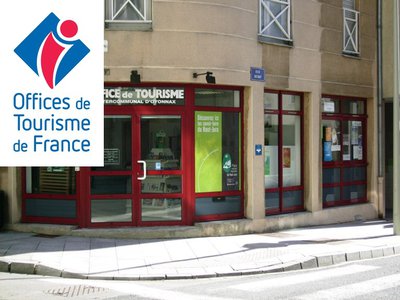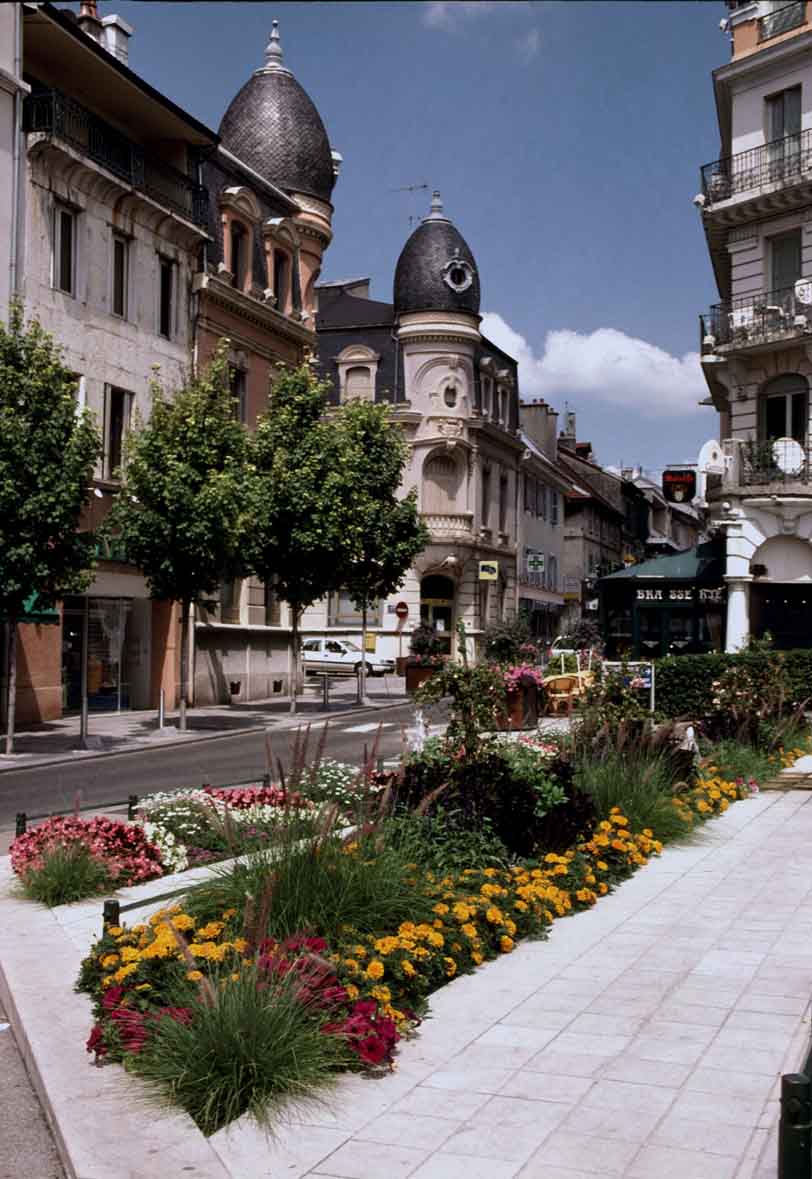
A tour of the town of Oyonnax
This city was built over two construction phases: once by craftmanship and comb manufacturing know-how, and secondly by industry, and particularly by the plastic industry. Often shaken by social organisation, the city offers a palimpsest of its history, it is up to you to discover it.
16 points of interest
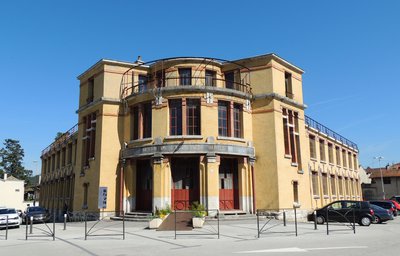
La Grande Vapeur - PNRHJ - F. Jeanparis History & HeritageLa Grande Vapeur
The “Grande Vapeur” factory was designed to meet specific needs in terms of the manufacturing of celluloid objects (untangling combs, fine combs, combs, clips, glasses frames, etc.). Several innovations in the building are a result of efforts to manage fire risks due to the high flammability of celluloid. In particular, its architectural shape limited the risks of the fire propagating to only one part of the building. (PNRHJ - Un tour en ville, “A tour of the town”)
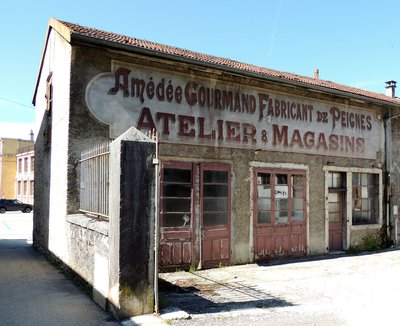
Les peigneux - PNRHJ - F. Jeanparis History & HeritageComb factories
Initially under the commercial supervision of Saint-Claude, wood and horn turning workshops started to specialise in an original type of manufacturing: combs. In Oyonnax, these “factories” started appearing at the same time Saint-Claude started to specialise in the manufacturing of pipes and progressively abandoned the manufacturing of combs. (PNRHJ - Un tour en ville, “A tour of the town”)
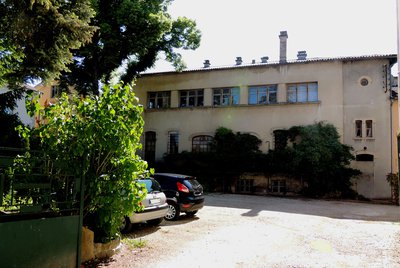
Ancienne Maison Marcelin-Rosset - PNRHJ - F. Jeanparis History & HeritageOld Maison Marcelin-Rosset
The old Maison Marcelin-Rosset, founded in 1888, housed several activities: manufacturing, horn, galalith and celluloid comb trading and raw material importing. The workshops adjacent to the residential part of the Maison were expanded during the first world war, when horn became popular amongst craftsmen once again. (PNRHJ - Un tour en ville, “A tour of the town”)
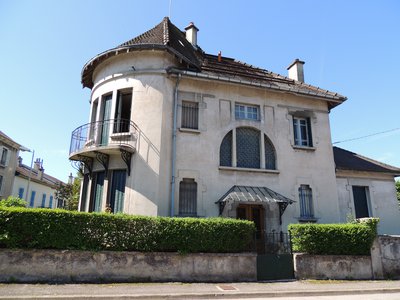
Villa - PNRHJ - F. Jeanparis History & HeritageVilla
The villa belonging to the former commercial director of Maison Bonaz is understated, much like the residential pavilions in the city, which are often only set apart by the ornamental details on their facades. Here, there is a large bay window made up of panels of moulded glass, held in place in a trellis. Many techniques to create these types of windows were very popular during the Art Nouveau and Art Deco periods, in the early 20th century. (PNRHJ - Un tour en ville, “A tour of the town”)
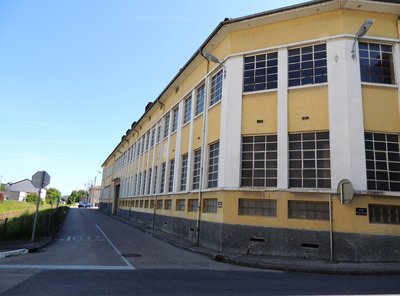
Ancienne usine Pontaroli - PNRHJ - F. Jeanparis History & HeritageOld Pontaroli factory
The diverse range of products manufactured in Oyonnax is a sign of the triumph of plastic materials in everyday life as well as of the standardisation of everyday or decorative objects. Henry Massonet’s tam-tam stool, Convert dolls, drainboards, juicers and other culinary articles form the Pontaroli factory - a company created in 1947 - are all objects that permeated and are still present in homes. (PNRHJ - Un tour en ville, “A tour of the town”)
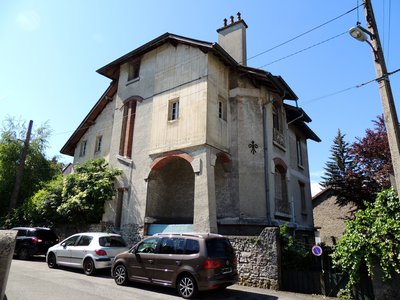
Villa Berchtold - PNRHJ - F. Jeanparis History & HeritageVilla Berchtold
Under the orders of Berchtold, the proxyholder of the Convert company, this villa was built in 1903 under the supervision of the architect of the Grande Vapeur building, Auguste Chanard. The villa draws its originality from its openings (brick archways), the treatment of its facades, and its arched portico. On the facade looking over the road is a bow-window, a curved bay window that was very fashionable during the early 20th century, which highlights the architect’s show of originality. (PNRHJ - Un tour en ville, “A tour of the town”)
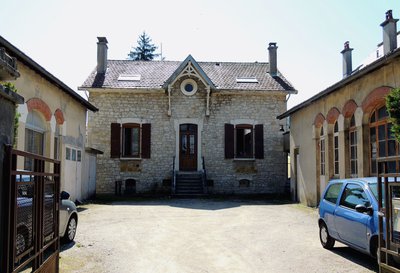
Atelier familial - PNRHJ - F. Jeanparis History & HeritageBoulevard Louis Dupuy
Until recently, working in the family workshop was an economic labour organisation model. Within the “factory”, medium-sized companies dominated by the figure of the “manufacturer”, interpersonal relationships have generated the feeling of belonging to a “Maison” (“House”), that some refer to as the “manufacturing spirit”. (PNRHJ - Un tour en ville, “A tour of the town”)
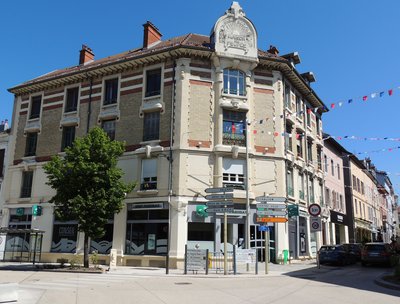
Ancienne Maison du peuple - PNRHJ - F. Jeanparis History & HeritageOld Maison du Peuple, l’Aurore Sociale
In 1912, at the initiative of René Nicod, the new federal secretary of the Section Française de l’Internationale Ouvrière de l’Ain (French socialist political party), l’Aurore Sociale - a public limited cooperative company with variable capital and personnel -, constructed a building at the centre of the city. A real “political stake” and a showcase of a cooperative mindset, the Maison du Peuple in Oyonnax housed a consumption and production cooperative, a family-run restaurant, a café and a cinema. On the pediment of the building, a cut beehive symbolises organised teamwork. (PNRHJ - Un tour en ville, “A tour of the town”)
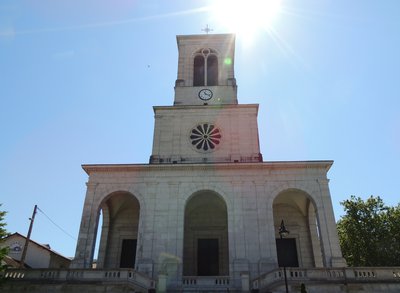
Église Saint-Léger - F.JEANPARIS History & HeritageSaint-Léger church
The legend of Saint-Léger is one of the building blocks of Oyonnax’s industrial specificity. During the 7th century, the Saint is said to have granted the craftsmen of Oyonnax the exclusivity of manufacturing combs for the royal armies as thanks for a service rendered by the inhabitants on his visit. (PNRHJ - Un tour en ville, “A tour of the town”)
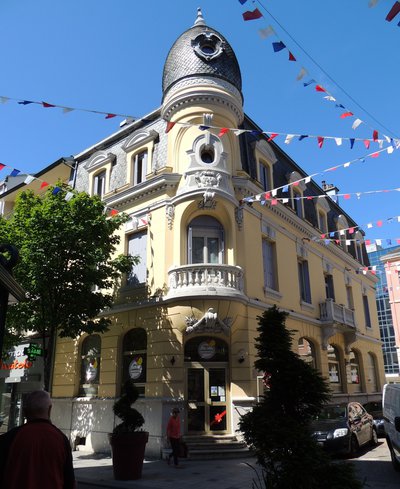
Ancienne Caisse d'Épargne - PNRHJ - F. Jeanparis History & HeritageFormer Caisse d’Épargne (savings bank)
Early 20th century public buildings, which were devoted to administrative functions, demonstrate the rise of the municipality’s political power and recent public service concerns. These three buildings which were built in 1908 (Jean Lavaud, architecte) changed function on several occasions. (PNRHJ - Un tour en ville, “A tour of the town”)
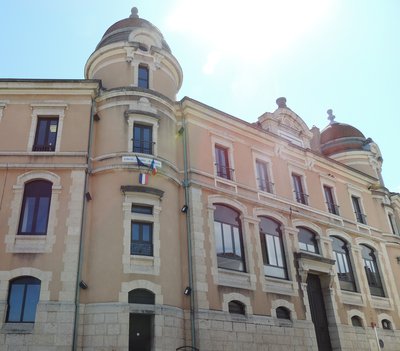
Ancienne école maternelle - PNRHJ - F. Jeanparis History & HeritageFormer nursery school
This former nursery school was built in 1892 and became a Girls’ Primary School in 1909. It is a building that represents the architecture of the Republic, depicting both the austerity of rationalism and the period’s taste for opulent detail. (PNRHJ - Un tour en ville, “A tour of the town”)
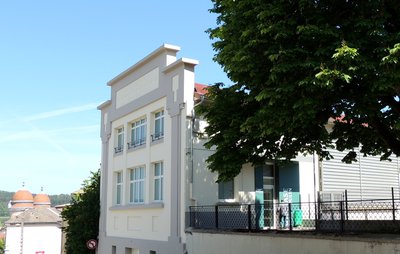
Salle communale de sport - PNRHJ - F. Jeanparis History & HeritageMunicipal Physical Education and Gymnastics hall
Campaigns to build sports facilities, gymnasiums and swimming pools were operations that were mainly carried out by the proponents of municipal socialism during the 1920s and 1930s. Sports and its virtues became a real challenge for social, political and urban reform. (PNRHJ - Un tour en ville, “A tour of the town”)

La Sarsouille - PNRHJ - F. Jeanparis History & HeritageThe Sarsouille
With its source starting at the Genin lake, the Sarsouille river makes its journey to Oyonnax through the Brétouze forest. In connection with the town’s industrial development, an interpretive trail starts at the impasse du Petit Moulin and tells the story of the river. This 5.6 km circuit, with 254 m in difference in level, heads up the Sarsouille river on an outing that lasts around 2 hours.
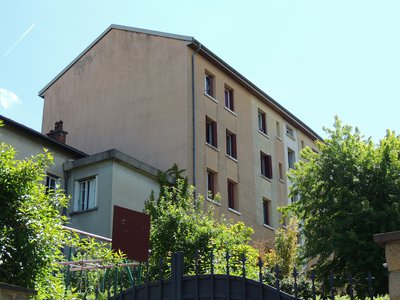
Les HBM à Oyonnax - PNRHJ - F. Jeanparis History & HeritageHBM or “Habitations à Bon Marché”
At the turn of the 21st century, the confirmation of a public social housing policy resulted in several founding acts, and particularly the Siegfried (1894) and Bonnevay (1912) acts. In Oyonnax, a public office for “Habitations à Bon Marché” (low cost housing) was created in 1920. (PNRHJ - Un tour en ville, “A tour of the town”)
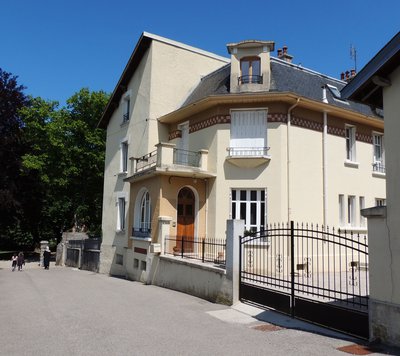
Ancien atelier - PNRHJ - F. Jeanparis History & HeritageOld workshop
In Oyonnax, the organisation of corporate life is partly based on the magnitude of the phenomenon of sub-contracting. Whether in the glasses sector, which became a “chain” in its own right in the 1930s, or in the comb-hair accessory sector, subcontracting part of manufacturing creates a dense network of small companies in which professional life and family life are closely linked. (PNRHJ - Un tour en ville, “A tour of the town”)
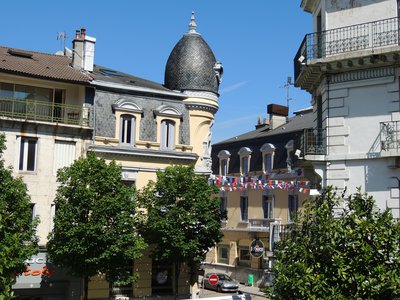
Centre-ville d'Oyonnax - PNRHJ - F. Jeanparis History & HeritageOyonnax
Oyonnax is a complex and interesting town based on ancient know-how - that of manufacturing combs and hair accessories - and on the vitality of an industrial sector centred on plastic. The complexity of its social relations and the fragility of its economic tissue - comprised of many small enterprises suffering from steep international competition - have also left their mark on this town. (PNRHJ - Un tour en ville, “A tour of the town”)
Description
From the La Grande Vapeur parking lot, take the little road to the north that joins up with avenue Président Roosevelt. Turn left onto the avenue and take the first turning on the left, rue Laplanche.
On arriving at rue René Nicod, continue right along this road towards the railway line. Take rue des Peupliers, which is just before the railway line on the left, and join up with rue Jules Michet via rue Gabriel Peri.
From here, head to the former family workshop located at 11 boulevard Louis Dupuy, and back. On returning to rue Jules Michelet, head up the road to the town centre and take rue Bichat on your right.
At the end of the road, head to rue Anatole France, via avenue Jean Jaurès.
Heading up the avenue to the left, you will come to the city’s historical centre. Opposite esplanade Charles de Gaulle, take a trip to the Saint-Léger Church and back.
Continue your walk up rue Anatole France. At the junction with rue Jules Michelet, turn right onto rue Sonthonnax.
Head up rue de la Victoire on your right. At the end of the road, turn left onto rue Congas, until you come to a junction with chemin du petit moulin.
From here, take a round trip to the old Habitation Bon Marché, on rue Laplace. On returning to the junction, take the little path that heads down to the Oyonnalithe park. Cross the park to reach rue de l’Échallon, via impasse du Moulin Carré.
On the right, there is a junction of several roads. Head to passage Alexandre Dumas, 70 m up rue Belmont.
Cross the René Nicod Park to return to rue Anatole France.
Your point of departure is located at number 2 on this road, at the junction with rue René Nicod.
- Departure : La Grande Vapeur, Oyonnax
- Arrival : La Grande Vapeur, Oyonnax
- Towns crossed : Oyonnax
Forecast
Recommandations
This discovery trail unfolds in an urban environment and carries hikers along pavements and pedestrian crossings.
In Oyonnax, parking spaces in orange zones are limited to 2 hours and those in green zones are limited to 8 hours.
Do not hesitate to visit the town’s Tourist Office, located at 14 bis rue de la Gare.
Information desks
Tourist information centre - Haut-Bugey
Espace des trois lacs - 4 rue du Docteur Mercier, 01130 Nantua
Transport
To visit and get about in the High-Jura, visit www.reshaut-jura.fr, the eco-mobility portal listing all means of transport within the Park.
Access and parking
Oyonnax is directly accessible from the A404, the D13, the D31 and the D85.
Parking :
Accessibility
- Emergency number :
- 114
Report a problem or an error
If you have found an error on this page or if you have noticed any problems during your hike, please report them to us here:

